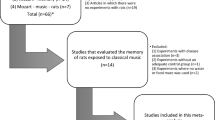Structural changes in the ventral segment of the hippocampus and the characteristics of the expression of serine racemase were studied in rats aged 12 and 24 months exposed to combined stress. Four groups of 10 animals were formed: group 1 were control rats aged 12 months; group 2 were control rats aged 24 months; group 3 were 12-month rats subjected to 30-min stress daily for seven days; group 4 were 24-month rats subjected to stress. Stress was applied in a special apparatus consisting of six isolated sectors of identical volume and allowing the combination of different types of stress to be applied (pulsing light, loud noise, vibration). The ventral segment of the hippocampus of experimental animals showed an increase in the specific number of shrunken hyperchromic neurons in field CA3 and decreases in neuron density, accompanied by pericellular edema, cytoplasmic vacuolization, and decreased serine racemase expression in the neuropil of the radial layer of fields CA1 and CA3. Stressed animals showed changes in neurons in the pyramidal layer of field CA3, which were combined with a decrease in the level of expression of serine racemase in dendrites in the radial layer of fields CA1 and CA3, which is taken as a sign of impairment to NMDA receptor-mediated transmission of nerve spikes in the hippocampus.
Similar content being viewed by others
References
E. V. Volotova, D. V. Kurkin, D. A. Bakulin, et al., “Effects of phenibut on memory and behavior in rats of different age groups subjected to seven-day combined stress,” Vestn VolgGMU, No. 2, 14–17 (2013).
A. V. Smirnov, I. N. Tyurenkov, M. V. Shmidt, et al., “Effects of combined stress on morphological changes and expression of NO synthase in the ventral segment of the hippocampus in rats,” Byull. Eksper. Biol., 160, No. 7, 110–114 (2015).
V. V. Khlebnikov, S. L. Kuznetsov, D. A. Chernov, et al., “Age-re la ted characteristics of the hypothalamo-hypophyseal-adrenal system in chronic heterotypic stress,” Morfologiya, 147, No. 1, 15–20 (2015).
M. R. Ekova, A. V. Smirnov, M. V. Shmidt, et al., “Comparative morphofunctional analysis of the characteristics of the ventral hippocampus in adult and aged rats exposed to combined stress,” Usp. Gerontol., 29, No. 1, 59–67 (2016).
D. T. Balu, A. C. Basu, J. P. Corradi, et al., “The NMDA receptor co-agonists, D-serine and glycine, regulate neuronal dendritic architecture in the somatosensory cortex,” Neurobiol. Dis., 45, No. 2, 671–682 (2012).
B. Campanini, F. Spyrakis, A. Peracchi, and A. Mozzarelli, “Serine racemase: a key player in neuron activity and in neuropathologies,” Front. Biosci., 18, 1112–1128 (2013).
D. G. Fujikawa, Acute Neuronal Injury: the Role of Excitotoxic Programmed Cell Death Mechanisms, Springer, New York (2010).
G. D. Guercio, L. Bevictori, Vargas-Lopes C, et al., “D-serine prevents cognitive deficits induced by acute stress,” Neuropharmacology, 86, 1–8 (2014).
J. M. Lee, G. J. Zipfel, and D. W. Choi, “The changing landscape of ischaemic brain injury mechanisms,” Nature, 399, Supplement, A7–A14 (1999).
P. J. Lucassen, J. Pruessner, N. Sousa, et al., “Neuropathology of stress,” Acta Neuropathol., 127, 109–135 (2014).
A. K. Mustafa, A. S. Ahmad, E. Zeynalov, et al., “Serine racemase deletion protects against cerebral ischemia and excitotoxicity,” J. Neurosci., 30, No. 4, 1413–1416 (2010).
A. K. Mustafa, M. Kumar, B. Selvakumar, et al., “Nitric oxide S-nitrosylates serine racemase, mediating feedback inhibition of D-serine formation,” Proc. Natl. Acad. Sci. USA, 104, No. 8, 2950–2955 (2007).
W. Tu, X. Xu, L. Peng, et al., “DAPK1 interaction with NMDA receptor NR2B subunits mediates brain damage in stroke,” Cell, 140, No. 2, 222–234 (2010).
Y. Wang and Z.-H. Qin, “Molecular and cellular mechanisms of excitotoxic neuronal death,” Apoptosis, 15, 1382–1402 (2010).
H. Wolosker, “Serine racemase and the serine shuttle between neurons and astrocytes,” Biochim. Biophys. Acta, Proteins and Proteomics, 1814, 1558–1566 (2011).
Author information
Authors and Affiliations
Corresponding author
Additional information
Translated from Morfologiya, Vol. 150, No. 6, pp. 20–24, November–December, 2016.
Rights and permissions
About this article
Cite this article
Smirnov, A.V., Grigor’eva, N.V., Ekova, M.R. et al. Morphological Changes and Characteristics of the Expression of Serine Racemase in the Rat Hippocampus in Combined Stress. Neurosci Behav Physi 47, 1010–1014 (2017). https://doi.org/10.1007/s11055-017-0504-1
Received:
Published:
Issue Date:
DOI: https://doi.org/10.1007/s11055-017-0504-1




